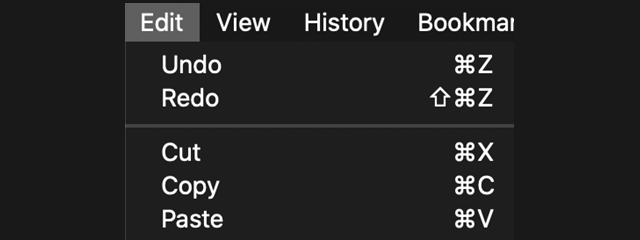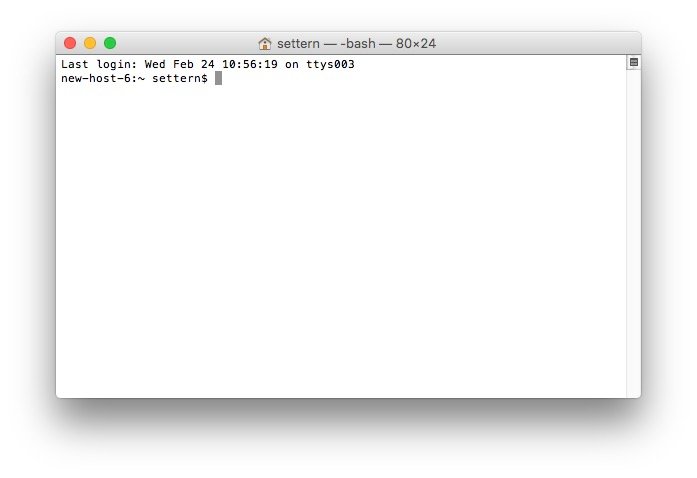

#Mac command line copy directory how to#
Now you understand how to copy files in Linux. The item can then be pasted by pressing Enter + V on your keyboard. Copy the copied item to the place where you saved it.
#Mac command line copy directory mac#
There are a few Mac keyboard shortcuts you may want to consider, such as Command + C (Copy). The command prompt will change to display that you’ve changed directories. To save a copy, hold down the left mouse and highlight the item to be copied. To change directories, use cd and the name of the directory. Use this command after copying to verify the files were copied successfully. The example above displays all the files in /directory. To list the contents of a directory enter the command: ls /directory The ls command is a handy partner to the cp command in Linux. To omit files from being copied, check out our guide on how to exclude files and directories in data transfer using rsync command. Omitting the slash on the source directory will copy the contents into a subdirectory. This copies the contents of the /etc/docker/ directory to /home/backup/docker/. To copy a directory with rsync, enter the following: rsync –a /etc/docker/ /home/backup/docker/ Using my_file_backup.txt as the target indicates the file will be renamed during the copy.Replace /new_directory/ with the destination.Replace the my_file.txt file in the working directory.The –a option means all, and is included with rsync commands – this preserves subdirectories, symbolic links, and other metadata.To copy a single file, enter the following into a terminal: rsync –a my_file.txt /new_directory/my_file_backup.txt Usage is similar to cp, but there are a few key differences to note. The rsync command in Linux is used to synchronize or transfer data between two locations. –R stands for recursive, which means “everything in that location.” This would copy all the files, as well as all the directories, to the / new_directory folder. –u update: copy only if source is newer than destination.

–R recursive: copies all files and subfolders in a directory.–i interactive: prompts for confirmation, highly advised.–f force: force the copy by deleting an existing file first.–p preserve: keeps the same attributes, like creation date and file permissions.

–v verbose: shows the progress of multiple copied files.Additional OptionsĪdditional options can be used in combination with the cp command: You may not get a warning before Linux overwrites your file – be careful, or see below for the –ioption. After the format process complete successfully, you can copy files from macOS to USB disk successfully. Select ExFAT in the Format drop-down list and begin to format. Then click the Erase button at the top of the right panel. Some users will add _old, some will add a number, and some will even change the three-letter extension (e.g. Open macOS Finder > Applications > Utilities > Disk Utility. You’ll need to change the name of the target file to copy in the same location. However, the same file cannot exist twice in the same directory. This Linux command creates a copy of the my_file.txt file and renames the new file to my_file2.txt.īy default, the cpcommand runs in the same directory you are working in. The basic format of the command is: cp source_file target_file Virtually all Linux distributions can use cp. The cp command is the primary method for copying files and directories in Linux. Using the cp Command to Copy Files and Directories in Linux If your version of Linux boots to a desktop graphical interface, launch a terminal window by pressing CTRL-ALT-F2 or CTRL-ALT-T. Step 3: Right-click a blank space again and choose Paste in the menu.Īfter these 3 procedures are finished, the selected text is pasted in the Command Prompt window instantly.ĭo you think that the methods introduced above really assist you to copy and paste command or text in the Command Prompt with effectiveness and efficiency? You can have your own answer after putting them into use.Note: These Linux commands can only be run from a terminal window.

Step 2: Choose the text you want to copy and press Enter on the keyboard. Step 1: Right-click any blank area in the window and select Mark in the list. Steps to copy text in Command Prompt window and paste the text in it. In the picture below, you can see that the command has been pasted in the window.Ģ. Right-click any blank space in the window of Command Prompt, and then select Paste in the menu. Step 2: Paste the command in the Command Prompt. Tips: You can also press Ctrl+C to directly copy the command. You can select the command with left mouse button, right-click it and choose Copy in the context menu, as shown in the following picture. Step 1: Copy a command in another document or webpage. Steps to copy a command from another place and paste it in the Command Prompt


 0 kommentar(er)
0 kommentar(er)
